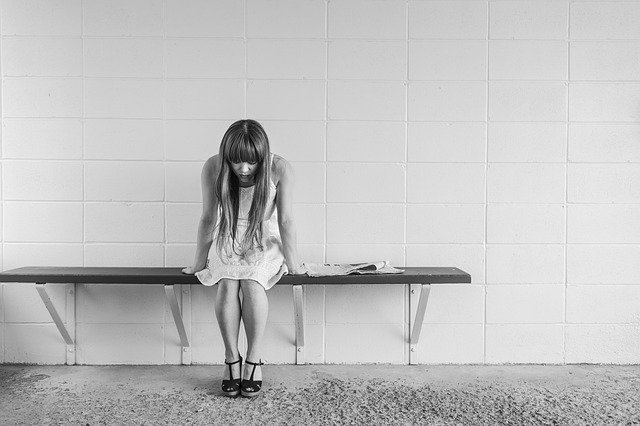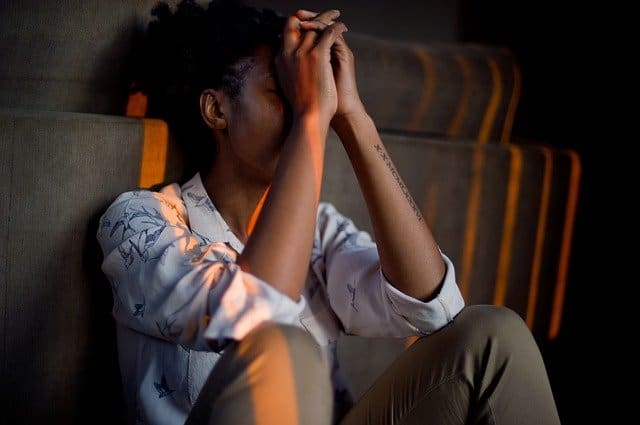Everyone has bad days. It’s an unavoidable, “Monday morning feeling” part of just living. Thing is, if you’re a woman, you are twice as likely than a man to experience feelings of this type, and so twice as likely for those feelings to develop into depression, a medical and clinically-diagnosed illness. So why is it twice as likely? Simple – women are very different from men, both biologically and psychologically, which are important and controlling factors in everyday living. Reproductive hormones and a differing female response to stress are parts of the female blueprint that make women unavoidably more susceptible to depressive disorders than their male counterparts.

Furthermore, there is the social factor, where a woman often has to fill many more roles than a man in today’s modern society. In fact, many of them are unique to a woman’s life experience, such as a mother and a wife, as well as an employee, a friend, a caregiver, and a nurse, to name the most prevalent ones.
“Sometimes one has simply to endure a period of depression For what it may hold of illumination if one can live through it, Attentive to what it exposes or demands.”
– May Sarton, U.S. poet and novelist
Unfortunately, women (and just like men who develop a depressive disorder) will often attempt to self-medicate with either drugs or alcohol, just to feel a little better about themselves and about being around others. However, self-medicating with addictive substances is no long-term solution to a mental health disorder, such as depression, with the only promised outcome that of substance addiction. The combination of a mental health disorder with either a substance use disorder (SUD) or an alcohol use disorder (AUD) is known as a co-occurring disorder or dual diagnosis and requires a more complex form of treatment where both disorders are treated simultaneously. And what’s worse is that each disorder, either the depression or the drug and alcohol abuse, if left untreated, will only exacerbate the symptoms of the other disorder – an endless, downward spiral of both physical and mental health. Sadly, for some women, the only way out of this seemingly inescapable spiral is to take drastic action – to take their own life.

Dual Diagnosis-Related Statistics for Washington State
Among other mental health disorders, undiagnosed depression is all too often a gateway into drug and alcohol use, as an innocent means of self-medication. However, such use is merely a temporary stop-gap (and a failed one, at that) for those who are trying to escape the feelings of depression that they experience. For anyone who is clinically depressed, drugs and alcohol will certainly keep you that way – depressed. It is only through medical treatment for the disorder that those with clinical depression will recover. Regular self-medicating with substances will only lead to the development of another challenging disorder – addiction, itself medically defined as “a chronic, relapsing brain disorder.” Here are several revealing statistics about the rising rates of depression among women in cities like Seattle and Spokane, as well as statistics for dual diagnosis and addiction across Washington state.
Female Depression in WA:
The increased rate of diagnosed depression across Washington state has continued steadily in recent years (21% in total), and, as you can see from the table below (which uses Blue Cross Blue Shield’s “Health of America” data from 2013-16), now stands at higher rates per capita compared to the U.S. national average:

Furthermore, you can clearly see that the rate of depression for women is twice that of men. Also among the findings, in Washington state, the following was highlighted:
- Women in Olympia (7.5%) and Spokane (7.3%) have a much higher diagnosis rate compared to the national average (6%)
- The diagnosis rates for the state’s major metropolitan areas are above the national average by as much as 1%
- Millennials (ages 18-34) in the Spokane area (5.4%) and in the Seattle area (5.1%) also have a higher diagnosis rate compared to the national average (4.4%)
Substance & Alcohol Addiction in WA:
According to data from the Substance Abuse & Mental Health Services Administration (SAMHSA), nearly 40,000 people entered drug and alcohol rehab in 2010, with 37.3% being women. In 2007-2008, Washington was one of the top ten states for rates in several drug-use categories, eg. past-month illicit drug use, and past-year non-medical use of painkillers. Approximately 10% of Washington residents reported past-month use of illicit drugs, with the national average being only 8%. In particular:
- Amphetamines: Around 4,000 people entered treatment for abusing amphetamines in 2010 (and, fortunately, that number continues to decline), of which 51.2% were female and 48.8% were male.
- Prescription Drugs: In 2010, around 3,000 people who went to treatment for opiate addiction, of which 46.7% were male and 53.3% were female. Since 2005 onwards, there has been a significant increase in people admitted into treatment for this type of abuse.

Dual Diagnosis in WA:
Accurate statistics concerning the prevalence of female dual diagnosis in Washington state are exceptionally hard to come by, so looking at the U.S. as a whole:
- Approximately 1 in 10 Americans ages 12 or older are or will at some point in their lives suffer from either SUD or AUD. From this, you can loosely estimate that easily more than half a million Washington State inhabitants have a disorder (or a substance addiction)
- Of those, 72% of those with SUD and 45% of people with AUD have at least one comorbid psychiatric condition, eg. depression
- Only about 40% receive any treatment for either disorder, and
- Less than 5% receive treatment for both disorders
Depression: The Most Common Disorder in Female Dual Diagnosis
According to the Centers for Disease Control and Prevention (CDC), it is estimated that 10% of U.S. citizens suffer from depression. That amounts to a massive number of both men and women who, because of their illness, are at a high risk of accidental injury, self-harm, and suicide. Depression also suppresses the immune system and weakens you physically. Adding either SUD or AUD risks both your physical and emotional health exponentially.
What is Clinical Depression?
Depression is not just a case of feeling down for a short time. Clinical depression, a profound medical disorder, seriously inters with your ability to work, maintain healthy relationships, and function socially. The main symptoms of clinical depression include:
- Feelings of hopelessness
- Anxiety
- Muscular pain or discomfort
- Weight loss or gain
- Disturbed or increased sleep
- Fatigue
- High level of irritability
- Poor cognition
- Suicidal thoughts or suicide attempts

Why Are Women More Susceptible to Developing Depression?
With clinical depression, day-to-day life itself may seem difficult or even impossible, and, sadly, that’s why a significant percentage of people with depression will try to self-medicate with substances and/or alcohol. Women are more susceptible because they can develop depression in ways unique to their sex, primarily:
- Postpartum Depression: Usually occurring after the birth of a baby (though sometimes during the pregnancy itself), and
- Premenstrual Dysphoric Disorder: A form of depression tied to a woman’s menstrual cycle

Recovery from Female Dual Diagnosis
As stated previously, recovering from a dual diagnosis, where depression is the mental health disorder, is a complex and simultaneous professional treatment, and requires an addiction rehab center that specializes in dealing with such co-occurring conditions. A more traditional, one-dimensional rehab program will simply not work. An integrated dual diagnosis rehab program should incorporate expert professional counseling, peer support, education, and relapse prevention for both depression and substance abuse. Accordingly, the SAMHSA advises that the treatment plan (where medication therapy is key) includes the following goals:
- Helping the client understand the nature of depression
- Teaching the client that recovery from depression and addiction is possible
- Motivating the client to make major changes in his or her life
- Giving the client practical skills for handling negative thoughts
- Helping the client identify and change addictive behavior patterns
At Northpoint Seattle, we offer a highly specialized outpatient drug and alcohol addiction treatment, which provides female patients with the flexibility to maintain work and family commitments, while receiving a level of care comparable to that of a full-time inpatient program. This program is offered at both our treatment centers in Bellevue and Seattle (at Northgate). Specifically, we provide treatment for female dual diagnosis patients with depression and offer both psychiatric care and the necessary medications. Through this 100%-integrated treatment, our clinicians will assist you in learning how to cope with both conditions and establishing a functional lifestyle. Lastly, we offer, as part of this program, effective therapies, such as Cognitive Behavior Therapy (CBT), and (the often overlooked) Contingency Management, essential guidance for those who need to change their addictive behaviors and destructive patterns.
